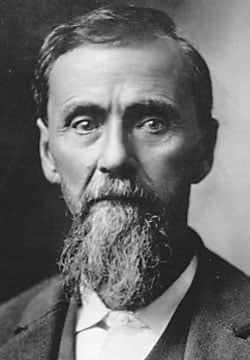History of Osteopathy
The concepts of Osteopathy, or as presently termed, Osteopathic Medicine, was first introduced in 1874 and officially named “Osteopathy” in 1885 by inventor, author, politician, physician, and surgeon Andrew Taylor Still in Kirksville, Missouri, United States of America. The son of a surgeon and a Methodist Church minister, Dr. Still soon discovered that to meet the highest possible form of health, all parts of the body should work together harmoniously. His goal was to restore the body to the best possible health with minimal surgery and medicine, influenced in part by the realization that medical treatments of that time were largely ineffective and in some cases, harmful.
In 1892, Still took on the first wave of 22 osteopathic students at the American School of Osteopathy (now known as the Kirksville College of Osteopathic Medicine). The first class of both men and women (symbolic of Still’s strong sense of liberalism) were taught over two years and included in-depth education in physiology and anatomy. He drew in full practice rights for his students, and upon graduation, awarded them the title of D.O. (Doctors of Osteopathy).
Dr. Still created the neologism “Osteopathy” by combining the Greek word “osteon,” meaning “bone,” and “pathos,” which means “experience.”
 Andrew Taylor Still, D.O.
Andrew Taylor Still, D.O.
A detailed history can further be found in the following literature by A.T. Still University's Museum of Osteopathic Medicine.
You may also watch the following video presentation by Jason Haxton, M.A., D.O., Director of A.T. Still University, Museum of Osteopathic Medicine, Kirksville, on ‘A.T. Still Biography’ and ‘The Early Years of Osteopathy’.
In summary, osteopathic medicine distinguishes itself as a complete system of prevention, diagnosis, and treatment based on a “whole person” approach. Its philosophy is based on the principles of unity of the human body, the body’s ability to regulate and heal itself, the somatic component of the disease, the interrelationship of structure and function, and the use of manipulative treatment in total care of the patient.


